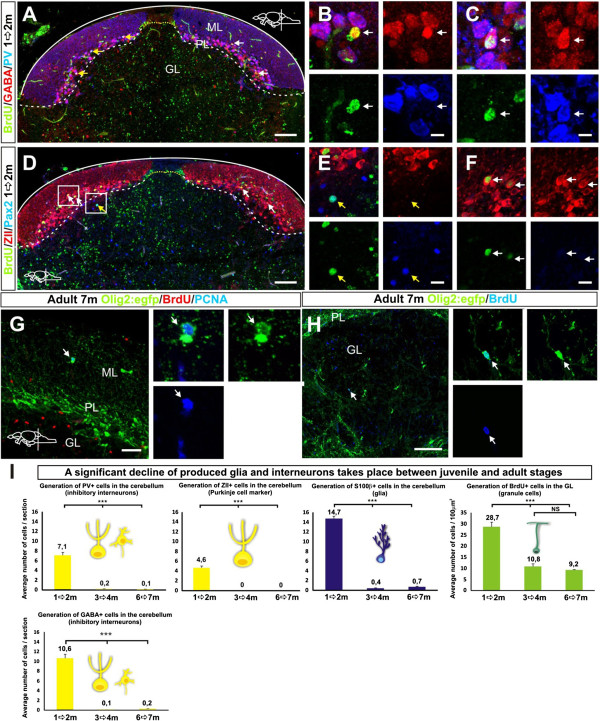Fig. 8 Generation of different cerebellar cell types. (A) Confocal maximum projection of a cerebellar cross section in a juvenile zebrafish showing BrdU labeled GABA+ inhibitory neurons (white arrows) and BrdU+/GABA+/PV+ neurons (yellow arrows); (B) High magnification of a single confocal plane showing a neuron co-localizing with BrdU and GABA (white arrow); (C) High magnification of a single confocal plane showing a neuron co-localizing with BrdU, GABA and PV (white arrow); (D) Confocal maximum projection of a cerebellar cross section showing BrdU labeled ZII+ Purkinje neurons (white arrows) and a Pax2+ Golgi neuron (yellow arrow); (E) High magnification of a single confocal plane showing a Golgi neuron co-localizing with BrdU and Pax2 (white arrow); (F) Magnified single confocal plane showing Purkinje neurons co-localizing with BrdU and ZII (white arrows); (G) A rare proliferating oligodendrocyte progenitor (PCNA/Olig2:egfp+) detected in the cerebellar parenchyma (arrow); (H) A putative oligodendrocyte labeled with BrdU+and Olig2:egfp+ detected in the brain parenchyma six weeks after the BrdU pulse; (I) Quantifications of the cell types produced in the cerebellum of juvenile and adult zebrafish after four weeks BrdU pulse chasing. A significant decline of cerebellar inhibitory neuron and glia production between juvenile and adult stages is detected while granule cell production declines during juvenile stages but is still maintained at a high level in the adult zebrafish (n = 5, P <0.001).
Image
Figure Caption
Acknowledgments
This image is the copyrighted work of the attributed author or publisher, and
ZFIN has permission only to display this image to its users.
Additional permissions should be obtained from the applicable author or publisher of the image.
Full text @ Neural Dev.

